The Region’s Only Level-One Trauma Center



The Region’s Only Level-One Trauma Center


For many years now, the Upstate Trauma Center has served as a major resource for central New York. It is the only level 1 trauma center in our 14-county region, serving over 1.7 million people and 28 referral hospitals. We are the second-busiest trauma center in the state, out of a total of 51 trauma centers!
Trauma systems developed from what was learned from the early and midtwentieth century wars. Injured soldiers from combat had better injury outcomes than in civilian populations. Arising from what was learned, in the early 1960s, the first two trauma centers were established: Cook County Hospital in Chicago and Baltimore’s Shock Trauma at University of Maryland. These centers were shown to significantly decrease traumatic preventable death and disability. As a result, and findingthat rural areas had worse patient outcomes, Illinois became the first
state to develop a statewide trauma system by implementing a plan to get injured patients quickly to resources. Since then, trauma systems across the nation have been developed, with NYS devel-oping a formal system in 1987. Upstate’s very own late Trauma Medical Director, Dr. William H Marx, played a significant role in the implementation and develop-ment of the state trauma system. His untimely passing in early 2022 was felt by the entire trauma community.
In the United States, trauma centers are designated by the American College of Surgeons from level 1 (comprehensive services) to level 3 (some trauma care services.) The different levels refer to the types of resources available in a trauma center and the number of patients admitted annually. All ACS designated trauma centers follow the standards published by the ACS in the Resources for Optimal Care of the Injured Patient. This publication
provides guidance for both adult and pediatric trauma centers. At Upstate we have level 1 designation (the highest level) for our adult and pediatric trauma programs. The ACS performs site visits of trauma centers all around the country to verify that they meet these standards. Some states have their own trauma-center rankings separate from the ACS. These levels may range from Level 1 to Level 6. In New York there are just the three levels, in congruence with the ACS system.
A level 1 trauma center provides the highest level of care to trauma patients. Being treated at a level 1 trauma center can reduce mortality by 25%, compared to a non-trauma center. It has a full range of specialists and equipment available 24/7 and admits a minimum of 1,200 patients annually.

Key elements of a level 1 center include 24-hour coverage by general surgeons, and prompt availability of care in varying specialties – such as orthopedic surgery, cardiac & thoracic surgery, neurosurgery, anesthesiology, emergency medicine, radiology, internal medicine, otolaryngology, oral and maxillofacial surgery, and critical care, which are needed to adequately respond and care for various forms of trauma that a patient may suffer, as well as provide rehabilitation services.
Most level 1 trauma centers are academic medical centers, such as Upstate. Additionally, a level 1 trauma center conducts research, is a leader in trauma education and injury prevention, and is a referral resource for communities in nearby regions. Level 2 and 3 trauma centers have varying capabilities to care for injured patients and have fewer requirements for research, education, outreach and patient volume for verification. Still, they play a key role along with nontrauma centers and EMS agencies in collaborating to care for injured patients in our region. These centers offer life-saving stabilization prior to
transporting the most seriously injured patients to Upstate.
Proud to be a valuable resource to our community
Annually, Upstate Trauma Center sees an average of 3,500 patients. Our program has seen steady growth which we anticipate will continue with the growth of business and industry in our region. With this growth, our trauma program has expanded too.
In 2022 the trauma program welcomed:
• Performance Improvement (PI) Coordinators, Emily Ducey and Allison Rondenelli
• Trauma Injury Prevention Coordinator, Anthony Scalise
• Trauma Registrar, Timothy Hendrick
• Trauma Surgeon, Dr. Alex Helkin
In 2022, the ACS released the latest edition of the Resources for Optimal Care of the Injured Patient. This is special to our trauma center as Dr. Marx played a key role in writing these standards and this edition is dedicated to him. Further, our trauma center will be one of the first centers
verified under the new standards in December 2023. These new standards uphold many of the best practices to which trauma centers previously adhered, but also introduce new requirements such as: addressing mental health care for trauma patients, additional disaster planning requirements, and several new patient safety, education, and injury prevention metrics to meet. We are excited to showcase all that our teams have done to meet the latest verification standards in 2023.
Finally, we extend our sincere appreciation for the support we received as we transitioned into our new leadership roles in 2022. We remain steadfast in our commitment to the care of the injured patient and to continuing Upstate Trauma’s longstanding legacy of trauma care to our Central NY community

Requirements: According to the American College of Surgeons (ACS), education and outreach programs are integral parts of the trauma program and are designed to help improve outcomes from trauma and minimize the effects of injury.
Trauma centers have an obligation to educate future providers and ensure that the public has an opportunity to access educational resources relevant to injury care.
Upstate Trauma Center is a verified Level I program, ready and waiting 24/7 to treat the region’s most critically injured patients. As the only Level I in the region, Upstate services a 14-county area that is home to 1.7 million people and includes 28 referral hospitals.
Level 1 is the highest or most comprehensive care center for trauma, capable of providing total care for every aspect of injury –from prevention through rehabilitation.
Broome
Cayuga
Chenango
Cortland
Herkimer
Jefferson Lewis
Madison
Oneida
Onondaga
Oswego
St. Lawrence
Tioga
Tompkins
Central New York Trauma Centers ¨ Upstate Medical University Level 1 - Adult and Pediatric ≠ UHS Wilson Medical Center Level 2 - Adult
Canton-Potsdam Hospital Level 3 - Adult ø St. Elizabeth Campus - Mohawk ValleyHealth System Level 3 - Adult


Many types of disasters involve injuries that require treatment at a Trauma Center. The most critically injured patients often require the care of Trauma Surgeons.
The ACS requires that the Trauma Program be involved in hospital’s emergency preparedness committee.
The representative to the Emergency Preparedness Committee must have taken the Disaster Management and Emergency Preparedness (DMEP) course.
The ACS’s objectives for the DMEP course are as follows:
• Understand the surgical problems, injury patterns, and issues that may result from disasters
• Discuss the role that surgeons can play in planning for and responding to mass casualty incidents and disasters, especially at the hospital level
• Become familiar with the terms and concepts of incident command
• Understand the principles and challenges of disaster triage
• Become familiar with treatment principles related to blast injury, chemical attacks, and radiological dispersal devices
• Know the civilian and military assets available for support


In 2022, Upstate’s Trauma Program was involved in a statewide initiative to train all Department of Transportation (DOT) personnel in Stop the Bleed. The hands-on activity in Stop the Bleed makes it more likely the skills will be recalled in an emergency situation.

Distracted driving is a leading cause of teen death nationally.
Our program strives to reach our communities with meaningful injury prevention initiatives and education.
Whether it's through social media, programming, webinars, lectures, visits, or other forms of outreach., we have found numerous and equitable ways to reach our communities.




We continually analyze our data to look for trends and injury patterns. Falling is consistently the number one cause of injury seen at Upstate. In response to this trend, we collaborate with community partners to implement programs and educational sessions to help mitigate falls in our most vulnerable populations.


Motor vehicle crashes are our second-leading cause of injury. We travel to schools to host a program called Impact Teens, aimed to reduce injuries caused by distracted driving – a leading cause of death for teens nationally.


Our third leading cause of injury is violence. Our hospital-based violence intervention program, VEPOP (Violence Education Prevention Outreach Program), partnered up with an amazing community organization, SNUG (Should Never Use Guns), this year to provide even more case management services to our patients.

The Impact Teen Driver booth at a local school fair allows for a discussion of the dangers of distracted driving. Students signed a safe driving pledge and took the time to learn about safety in exchange for some cool Trauma Center giveaways.



Ages 80 + 30%
Ages 70 - 79 25%
Ages 60 - 69 19%
Ages 50 - 59 9%
Ages 40 - 49 6%
Ages 30 - 39 5%
Ages 20 - 29 4%
Ages 15 - 19 2%


Trauma Performance Improvement coordinator, Shelby Brabant, represented Upstate at two national conferences this year.


Shelby has been a Registered Nurse for over 7 years. She began her career in inpatient Medical/Surgical nursing with a focus in ventilator-dependent patients.
She transitioned to Upstate in 2016 and began practicing as a floor nurse in Surgical Specialties. In 2018, she was promoted to Clinical Training Specialist in the outpatient surgical care setting. Following completion of her MSN, she accepted a position as Performance Improvement Coordinator for Upstate’s Adult Trauma Program.
This poster was presented at the 2022 Trauma Center Association of America (TCAA) Conference. This poster introduces the new trauma rounds PI initiative where the PI Coordinators attend patient rounds and immediately begin reviewing patient care and quality measures in real-time. This proactive process helps us to improve documentation of key metrics such as mechanisms of injuries, pre-existing conditions, consulting and admitting services, and potential PI opportunities.
This poster was presented at the 2022 Trauma Quality Improvement Program (TQIP) conference. The poster highlights our trauma dashboard which includes key measures of our effectiveness as a trauma center and the efficiency of our processes.

Improving
Members of the multidisciplinary team came together to practice use of our massive transfusion protocol in the care of a simulated patient.
The purpose of this drill was to explore the challenges, find the strengths, and generate ideas for delivering highly effective streamlined care to patients requiring MTP.

As a level 1 trauma center, we take care of the region’s sickest injured patients. We continuously practice and prepare for our
trauma patients. Whoever, whenever, and whatever – we are always ready.
“Massive Transfusions” are life-saving procedures designed to rapidly deliver blood to a severely injured patient who has life-threatening bleeding. All our teammates play crucial roles during massive transfusions. We strive to work together to deliver the best care possible to those who need us.





The goal of our outreach efforts is to have fewer people with injuries in our communities and empower the public to make key lifestyle choices that can keep them and their loved ones safe.
Emergency Medical Services are the backbone of our trauma system. These critical and skilled first responders initiate immediate interventions to patients in the field and provide rapid transportation to the trauma center.

Upstate has cutting-edge specialty imaging equipment and staff available 24/7/365 for our injured patients.







Upstate has highly specialized trauma rooms and uniquely trained trauma staff in our emergency department to care for our most injured patients upon arrival.

Upstate has comprehensive coverage of specialized, highly-skilled surgeons and interventional radiologists who perform critical patient procedures.


Our most critically injured patients are cared for in a variety of specialty intensive-care-units, including surgical/trauma ICU, Neuro ICUs, Burn ICU, Cardiac ICU, and Medical ICUs. See page 14-15.
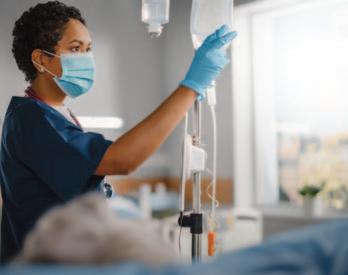
“med-surg” units provide an array of excellent multi-disciplinary care that call on a vast array of skills and knowledge.
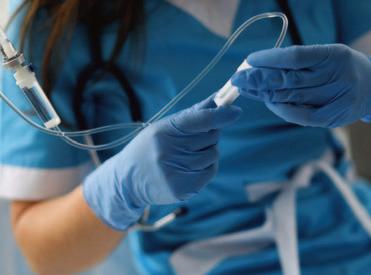
Our trauma clinic at Upstate provides follow-up care as well as continuity of care for many of our patients.

Some patients’ needs fall somewhere between intensive care and acute care. This is where stepdown units shine.
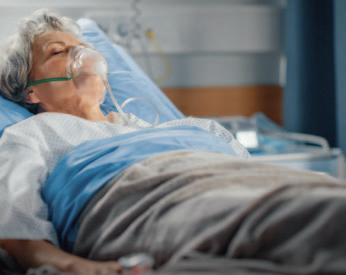
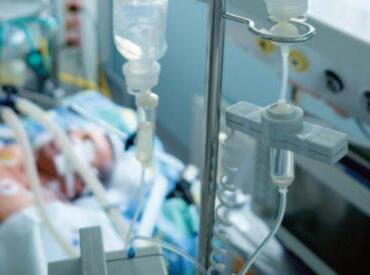
post-acute care, like rehab, helps patients regain strength and functionality in order to reintegrate successfully back into our communities and everyday life.













Addressing mental health is a key component to physical recovery after trauma. The TSN is designed to help survivors connect with others who have gone through similar situations and provide peer support and resources to heal. See page 12.

This is a typical timeline for a critically injured patient with some variability according to patient’s condition and needs.
including virtual support groups and forums, survivor and family stories, recovery assessments, classes, and much more.

In 2022 we rolled out a new program for our trauma patients. The Trauma Survivors Network (TSN) is a community of patients and families who are looking to connect with one another and rebuild their lives after a serious injury. Joining this community can help ease the anxiety and frustration often experienced following a sudden injury, the resulting hospitalization, and often the long road to recovery.
Becoming a member is easy and free. By visiting the TSN website patients can access a variety of free benefits
The “Traumapedia,” available through the TSN website, houses a small library of articles providing education on the holistic approach to life after experiencing traumatic injuries.



Trauma survivors and their families are not alone! Our designated Upstate TSN Coordinator, Anthony Scalise, can help participants register and navigate.
Scan the QR code to access Upstate’s TSN webpage.

"I've worked with trauma patients across several disciplines. Throughout this time, I've experienced tragedy but also been a part of and witnessed some amazing survivor stories. I've come to care deeply about our trauma patients. As a TSN coordinator, I want to help our patients not just survive their trauma, but thrive and live happy, whole, & meaningful lives after injuries."
Anthony Scalise, RN, BSN Trauma Injury Prevention Coordinator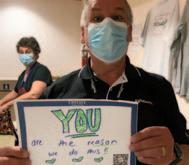

Every May we celebrate National Trauma Survivors Day. This celebration seeks to draw inspiration from and provide support to survivors of traumatic injuries and their caregivers, opening the road to their recovery from trauma.

Our trauma program celebrated National Trauma Survivors Day by participating in the “2022 Race to Rebuild” in honor of trauma survivors

Tim started working at Upstate in June 2018 as a medical records clerk at the Pediatric and Adolescent Center. After that, he joined the health information Release of Information team at Upstate before joining the Trauma program as a registrar. He graduated from SUNY OCC with associate degrees in liberal arts and health Information technology before getting his Bachelor of Science in Health Information Management at SUNY Polytechnic. In January 2018 he became certified as a registered health information administrator. He has since joined the Upstate Trauma team as a trauma registrar and has grown tremendously in this role.
Allison comes to the trauma program with more than ten years of experience caring for trauma patients. She started as an RN at Upstate in 2012 on the Trauma/Medical/Surgical floor, where her passion for working with trauma patients began. Most recently she has worked in the Surgical-Trauma ICU caring for our region's most critically injured patients. She received her MSN from Keuka College in 2021. She is an active member of the Society of Trauma Nurses and American Trauma Society.
Emily has been a registered nurse for more than 10 years. She received her associate degree from Fairmont State University and her BS in Nursing from West Virginia University.


Emily began her nursing career caring for trauma patients at West Virginia University Hospital, an ACS Verified Level 1 Adult Trauma Center. She discovered her passion for caring for Trauma patients while working on the Trauma/Medical/Surgical floor. In 2018, Emily joined Upstate as a nurse in the Surgical Intensive Care Unit, where she cared for some of the most critically injured patients in the region. Emily is an active member of the Society of Trauma Nurses and American Trauma Society. She brings with her expert clinical knowledge and a commitment to delivering high quality care to our community.

Anthony has worked as a registered nurse in the Adult Emergency Department and the ICU Support Pool. In the Support Pool he worked in all six of our Intensive Care Units. He is dually board certified in Emergency and Critical Care Nursing. For the past nine years, Anthony has volunteered as a firefighter and EMT. While obtaining dual bachelor's degrees in biology and nursing, he founded Utica
University Emergency Medical Services. For the last four years he has worked as the Deputy EMS Coordinator for Oneida County Emergency Services. In this role he taught Stop the Bleed at nursing homes, fire departments and various community organizations. Additionally, during the height of the COVID-19 pandemic he worked as a public health nurse supervisor helping facilitate vaccinations across Oneida County. At Upstate, Anthony teaches Trauma Nursing Core Course (TNCC) and Advanced Cardiac Life Support (ACLS). He also serves as a member of Upstate University Hospital’s Emergency Management Team.
Alex Helkin, MD
Trauma Surgeon
Alex Helkin, MD, joined SUNY Upstate Medical University faculty in October 2022. He received his MD from the Stony Brook School of Medicine in 2012. Dr. Helkin completed his general surgery residency at Upstate Medical University his Surgical Critical Care Fellowship in 2020 at the University of Pennsylvania Perelman School of Medicine before joining the Trauma and Critical Care faculty at The Ohio State University Wexner Medical Center. He received his board certification for General Surgery in 2020 and Surgical Critical Care in 2021. Dr. Helkin came to SUNY Upstate Medical University as assistant professor of Surgery and the director for the Surgery clerkship. In his free time Dr. Helkin enjoys cooking and spending time with his wife and three children.



Upstate’s Surgical/Trauma ICU (SICU) is a 13-bed Intensive Care Unit that provides high-quality multidisciplinary care to our sickest trauma patients. Our collaborative team provides care based on best practices and patient need during the most critical phases of injury.
“I am very proud to be a nurse in the SICU where I am able to provide comfort and calmness to patients during their worst days, while simultaneously providing the critical care needed to save lives. In the SICU we have a major focus on teamwork, personal growth and development, continued education, and innovation, in order to ensure patients receive the highest level of care. I love working with a team that is so passionate about trauma care and I couldn’t imagine working anywhere else.”
SydneyUpon completing orientation, all SICU nurses are competent in the specialized care a trauma patient requires. Our nurses are up to date on latest trauma nursing practice recommendations, use systematic assessment to rapidly identify life-threatening injuries, and deliver evidence-based care through education they receive during courses such as Trauma Nursing Core Course (TNCC), Advanced Trauma Care for Nurses (ATCN) and Trauma Resuscitation Orientation Course. Massive blood loss is the top cause of death in the injured patient, so all our nurses are trained on how to use the Belmont Rapid Infuser, as well as how to run the Massive Transfusion Protocol (MTP). In conjunction with Crouse Obstetric Department, our SICU delivers high-quality trauma care to pregnant trauma patients with continuous fetal monitoring.
In the SICU, patients are under the care of nine attending physicians who have specialized backgrounds in the care of critically injured patients, and their team of residents. All our SICU attendings are faculty in the Upstate School of Medicine. Our surgical residents are required to maintain current ATLS certification and cover the SICU as part of their rotation schedule.
1.7 million
In 2022 a total of 200 trauma patients were admitted to the SICU from the ED.






